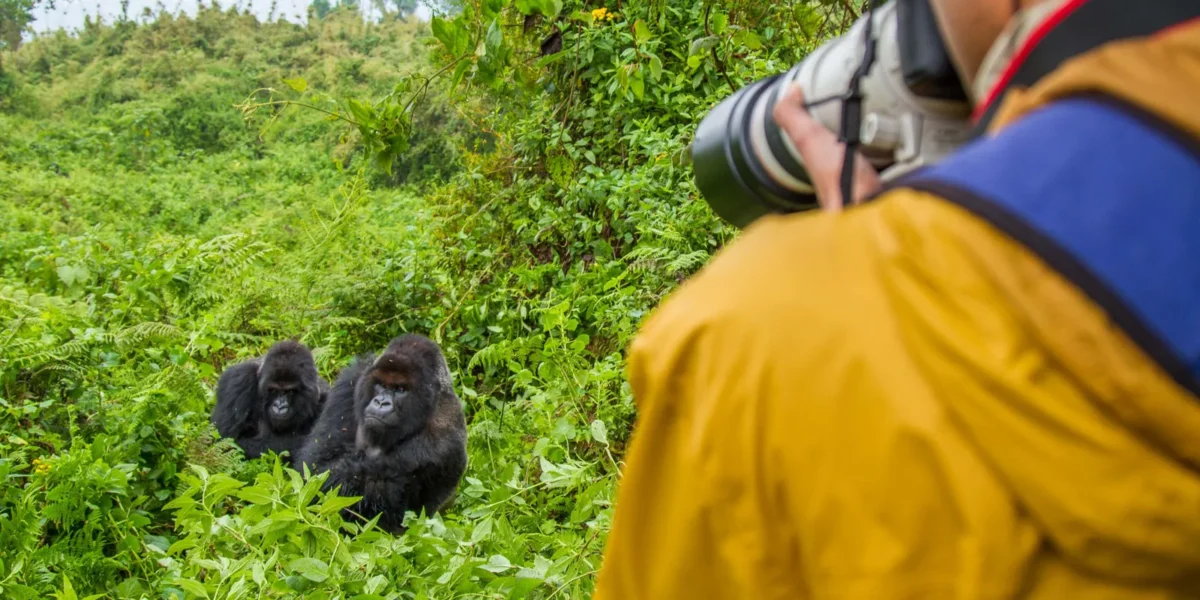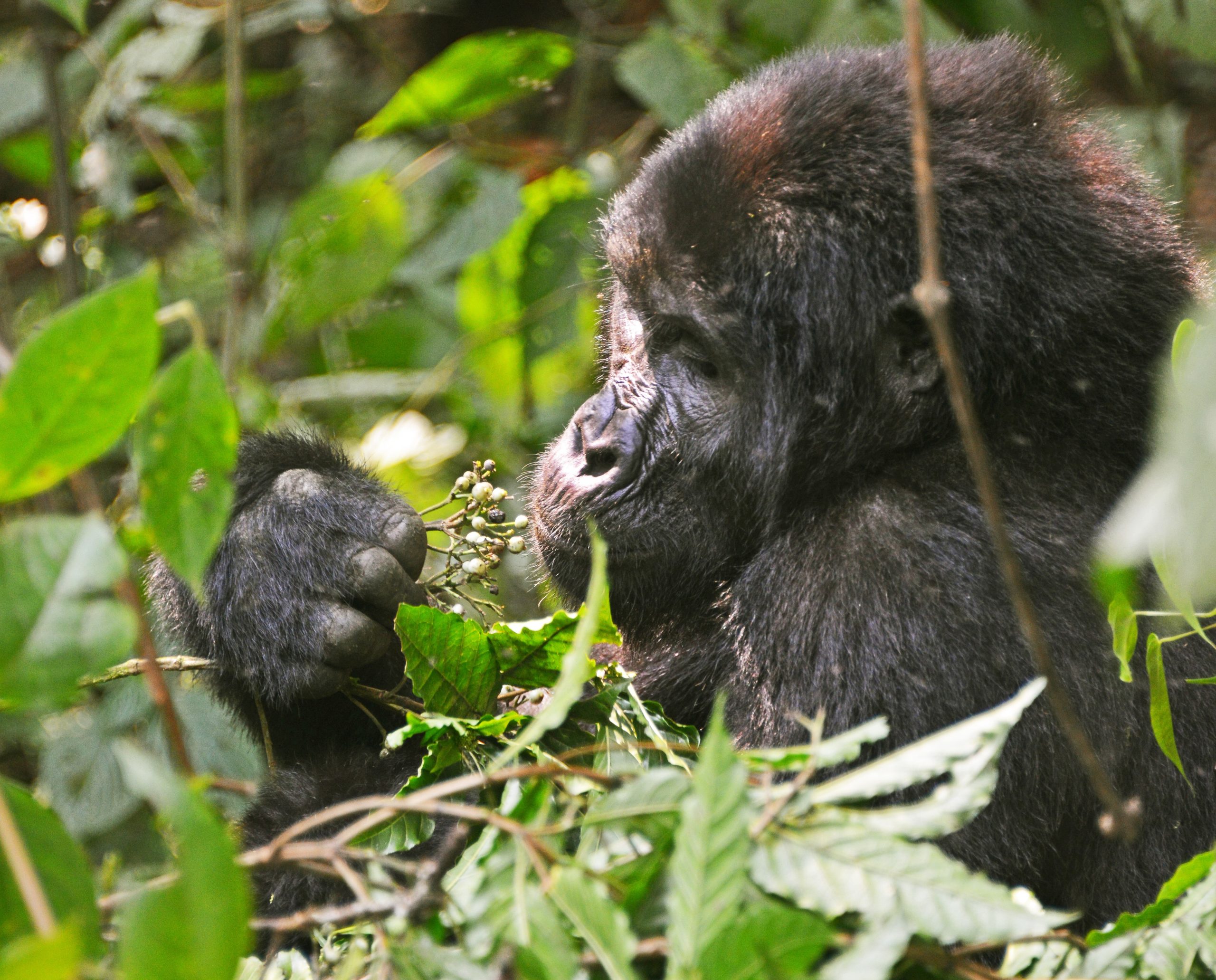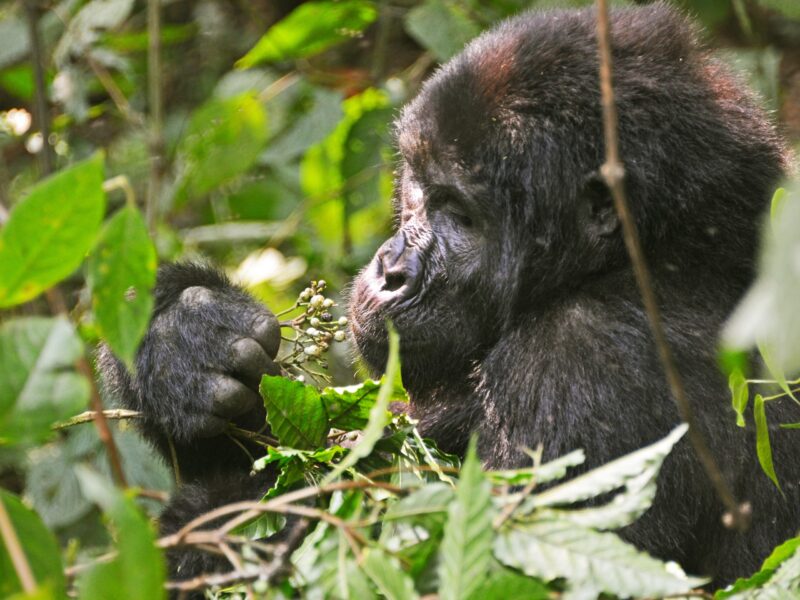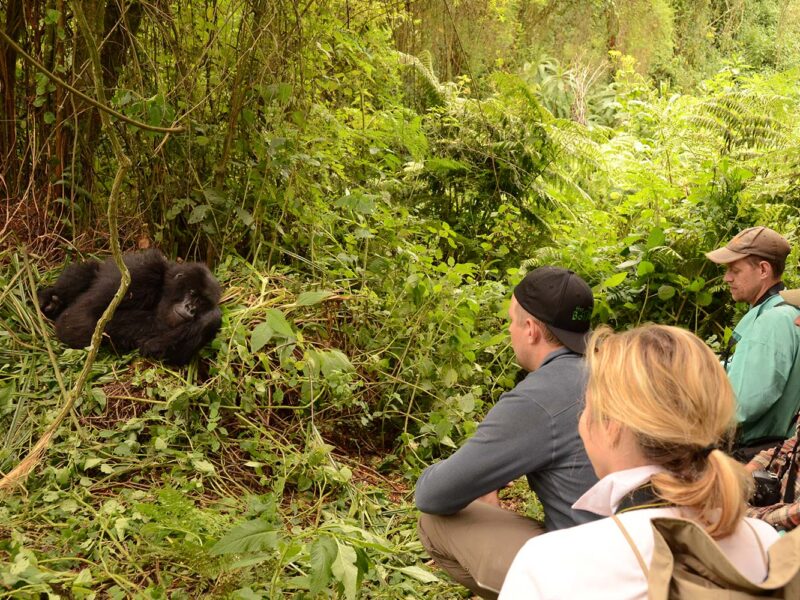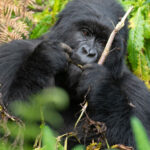
How Much Does a Gorilla Trekking Permit Cost in Uganda?
September 27, 2025
How far in advance should I book my gorilla trekking permit for Uganda and Rwanda?
September 30, 2025How Difficult Is Gorilla Trekking in Uganda and Rwanda?
One of the most common questions travelers ask before booking Uganda Gorilla Trekking Safaris or Rwanda Gorilla Trekking Safaris is: “How difficult is gorilla trekking in Uganda and Rwanda?” At Winton African Safaris, we believe that preparation and accurate information are essential in helping travelers enjoy this once-in-a-lifetime adventure. Gorilla trekking is not a typical game drive or simple wildlife tour—it is an active experience that involves hiking through dense forests, ascending steep trails, and walking for hours in search of the endangered mountain gorillas. The level of difficulty varies depending on factors such as the location of the gorilla family, the traveler’s fitness, and the terrain conditions on that particular day.
Understanding the Challenge of Gorilla Trekking in Uganda and Rwanda
Uganda and Rwanda are the two best destinations for encountering these gentle giants in their natural habitats. In Uganda, the majority of treks take place in Bwindi Impenetrable National Park and Mgahinga Gorilla National Park, while Rwanda’s gorilla encounters happen in Volcanoes National Park. Both destinations are breathtaking, offering mist-covered mountains, lush tropical forests, and a variety of wildlife species that enrich the trekking experience. But the question remains: Is gorilla trekking too challenging for average travelers?
The answer depends largely on your perspective. While it can be physically demanding, with preparation and the right mindset, travelers of varying ages—from young adults to seniors—have successfully completed gorilla treks. At Winton African Safaris, we specialize in crafting itineraries that match your fitness level while combining gorilla trekking with Uganda Safaris, Rwanda Safaris, Tanzania Safaris, and even cultural explorations such as the Maasai People Expedition. By understanding the challenges ahead of time, you can be confident and ready for one of the most rewarding wildlife encounters on earth.
What Makes Gorilla Trekking in Uganda and Rwanda Physically Demanding?
When travelers consider booking a Uganda Gorilla Trekking Safari or a Rwanda Gorilla Trekking Safari, one of the biggest concerns is: What makes gorilla trekking physically demanding? The answer lies in the unique environment in which gorillas live. Mountain gorillas inhabit high-altitude tropical forests ranging between 2,200 to 4,000 meters above sea level. These areas are often steep, rugged, and covered in dense vegetation, which means visitors must be prepared for long hikes through sometimes challenging conditions.
In Uganda’s Bwindi Impenetrable National Park, the name itself reveals the reality: thick forests, tangled vines, slippery slopes, and muddy trails. Treks can last anywhere from 2 to 8 hours depending on how far the gorilla family has moved. Rwanda’s Volcanoes National Park has more open bamboo forests, but it also requires uphill climbing across volcanic slopes, which can be strenuous. The physical demand is not extreme mountaineering, but it does require stamina, balance, and patience.
Another factor that influences difficulty is altitude. For travelers unaccustomed to hiking at high elevations, the thinner air may cause quicker fatigue. This is why it is important to spend a day or two acclimatizing in nearby towns like Kisoro (Uganda) or Musanze (Rwanda) before the trek.
At Winton African Safaris, we often advise our guests: “Think of gorilla trekking as a moderate mountain hike with the reward of meeting the world’s most magnificent primates.” While the trails can be demanding, the pace is manageable, and porters are available to assist with carrying bags or providing extra support. With proper preparation, even travelers concerned about their fitness level can successfully enjoy the magic of a gorilla encounter.

Bwindi Impenetrable National Park
Can Older Travelers or Beginners Participate in Gorilla Trekking?
A frequent question we hear at Winton African Safaris is: “Am I too old or inexperienced to go on gorilla trekking in Uganda and Rwanda?” The good news is that age is not a strict limitation, and people in their 60s, 70s, and even beyond have successfully completed gorilla treks. What matters most is not your age but your general level of health, mobility, and willingness to embrace a physical adventure.
Uganda and Rwanda both have systems in place to support travelers of varying fitness levels. For example, travelers who may not be able to hike long distances can request allocation to gorilla families located closer to the trailheads. In addition, sedan chairs or locally crafted stretchers are available, carried by teams of porters who can assist travelers with mobility challenges. These services ensure that nearly everyone who dreams of seeing gorillas can have the opportunity to do so.
For beginners who may not have hiking experience, gorilla trekking is still very achievable. The guides set a steady pace, with breaks along the way for water, photography, and catching your breath. Porters are also available for hire, offering not only physical support but also contributing to the local communities. In Rwanda, Volcanoes National Park’s bamboo zones often make trekking easier for first-timers, while Uganda’s Mgahinga Gorilla National Park offers slightly less strenuous routes compared to Bwindi’s rugged terrain.
At Winton African Safaris, we emphasize preparation: light physical exercise before your trip, comfortable hiking gear, and mental readiness. By approaching the trek with realistic expectations, older travelers and beginners alike can find gorilla trekking to be a deeply fulfilling highlight of their Uganda Safaris or Rwanda Safaris adventure.
How Do Uganda and Rwanda Differ in Gorilla Trekking Difficulty?
Many travelers planning Tanzania Tours, Kenya Safaris, or Uganda Safaris often ask us: “Is gorilla trekking more difficult in Uganda or Rwanda?” The answer depends on the park, terrain, and individual fitness levels. Both countries offer extraordinary gorilla trekking, but the experience differs slightly due to geography and accessibility.
In Uganda, Bwindi Impenetrable National Park is known for its rugged terrain. Trails can be steep, muddy, and heavily forested, making them more physically demanding. The “impenetrable” aspect comes from thick undergrowth that sometimes requires guides to use machetes to clear paths. Treks here can be unpredictable in length, sometimes lasting an entire day. However, the variety of terrain—from valleys to ridges—adds a thrilling sense of adventure. Mgahinga National Park, also in Uganda, tends to offer shorter and less challenging treks compared to Bwindi, though gorilla families are fewer.
In Rwanda, Volcanoes National Park offers more accessible trekking experiences. The bamboo forests are less dense than Bwindi’s thick jungles, and although the trails involve uphill climbs, they are generally shorter. Many travelers describe Rwanda’s treks as slightly less demanding, making it a preferred option for those concerned about physical exertion.
At Winton African Safaris, we help travelers choose based on their fitness levels, interests, and time. For adventurous travelers seeking a more challenging experience, Uganda may be the perfect choice. For those preferring a shorter hike with equal rewards, Rwanda is ideal. In both destinations, the reward—an hour spent in the company of endangered gorillas—is priceless and unforgettable.
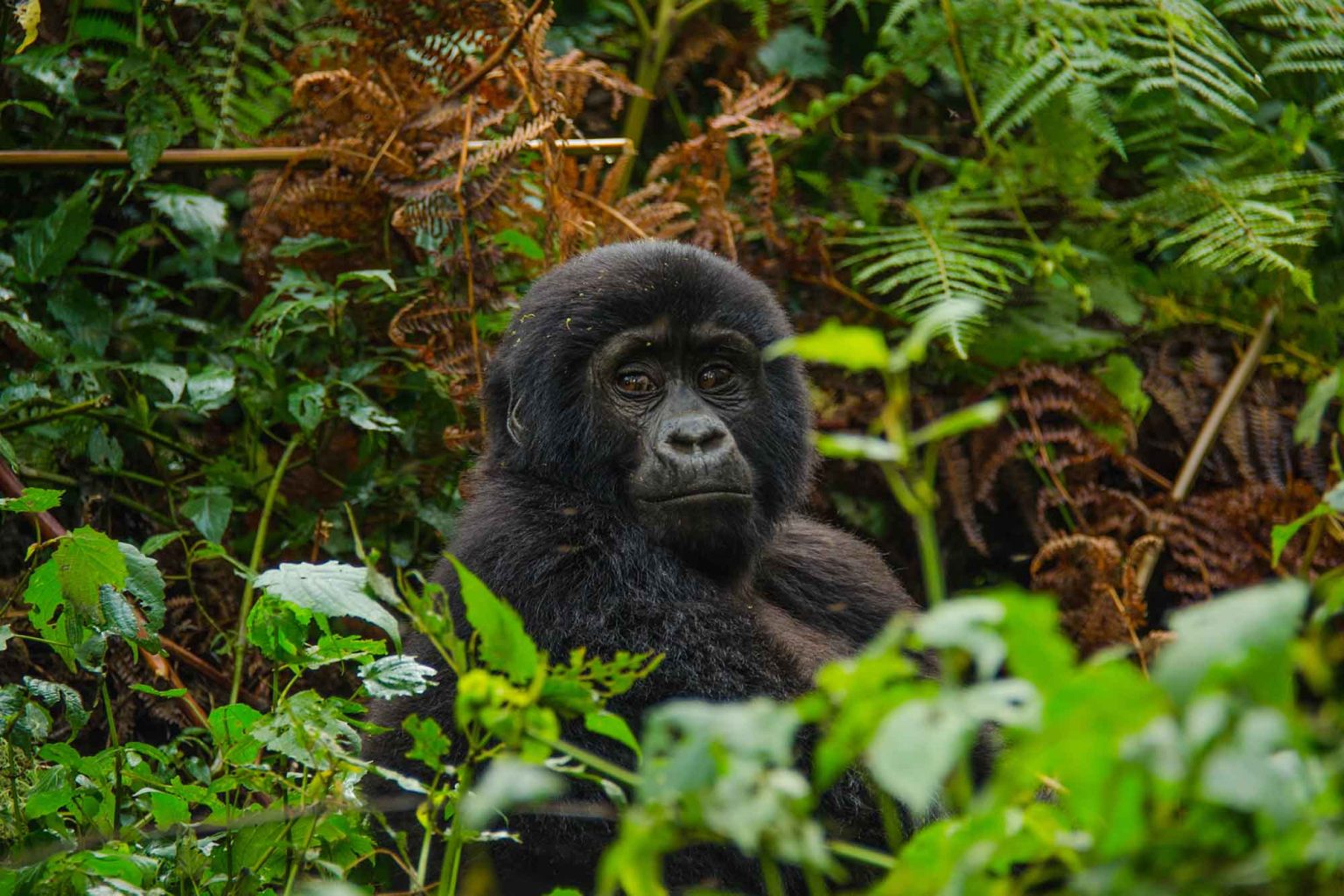
Africa Gorilla Tracking Safari
How Can Travelers Prepare for Gorilla Trekking in Uganda and Rwanda?
Another key question is: “How can I prepare for gorilla trekking in Uganda and Rwanda to make it less difficult?” At Winton African Safaris, we encourage travelers to see preparation as both physical and mental. Physically, light exercises such as walking, stair climbing, and cardio training a few weeks before your safari can make a significant difference. These exercises strengthen stamina and prepare your body for the uphill climbs and uneven terrain of gorilla habitats.
Equally important is packing the right gear. Sturdy hiking boots with good grip are essential for muddy or slippery slopes. A walking stick, often provided at the start of the trek, offers extra balance. Long-sleeved shirts and trousers protect against nettles and insects, while rain jackets prepare you for sudden tropical downpours. Gloves are recommended for gripping vines and vegetation while navigating dense forests.
Mentally, travelers should prepare for patience. The gorillas move freely through their natural habitat, and finding them may take time. Guides use trackers and local knowledge to locate the gorillas, but treks can last several hours. Embracing this unpredictability is part of the adventure.
Finally, hiring a porter is highly recommended. Beyond carrying your backpack, porters offer a helping hand on steep paths and are invaluable for maintaining balance on slippery slopes. Supporting porters also means contributing directly to local livelihoods, which in turn supports gorilla conservation.
When travelers prepare properly, the question shifts from “How difficult is gorilla trekking in Uganda and Rwanda?” to “How rewarding and life-changing can this experience be?”
Can Gorilla Trekking Be Combined with Other East African Safaris?
Many travelers wonder: “If gorilla trekking is physically demanding, can it still be combined with other safari experiences like the Tanzania Great Migration or Kenya Wildlife Safari?” The answer is yes, and in fact, this combination creates one of the most diverse and memorable safari experiences in Africa.
For example, a traveler may begin with Uganda Gorilla Trekking Safaris in Bwindi, followed by a Uganda Wildlife Safari in Queen Elizabeth National Park, where tree-climbing lions and hippo-filled waterways add contrast to the forest experience. Similarly, gorilla trekking in Rwanda’s Volcanoes National Park can be combined with a visit to Akagera National Park for savannah wildlife viewing or Nyungwe National Park for Rwanda Chimpanzee Safaris.
Beyond Uganda and Rwanda, cross-border itineraries are increasingly popular. After trekking gorillas, travelers may fly to Tanzania for the Tanzania Great Migration in Serengeti or the predator-rich landscapes of Ruaha National Park. Kenya’s Masai Mara National Reserve also offers breathtaking opportunities to witness the wildebeest migration, complementing the intimacy of gorilla encounters with grand savannah spectacles.
At Winton African Safaris, we design itineraries that balance the physical demands of gorilla trekking with relaxing and wildlife-rich experiences. By combining gorilla trekking with other safaris, travelers enjoy the full spectrum of East Africa—from dense rainforests and primates to open plains and the Big Five.
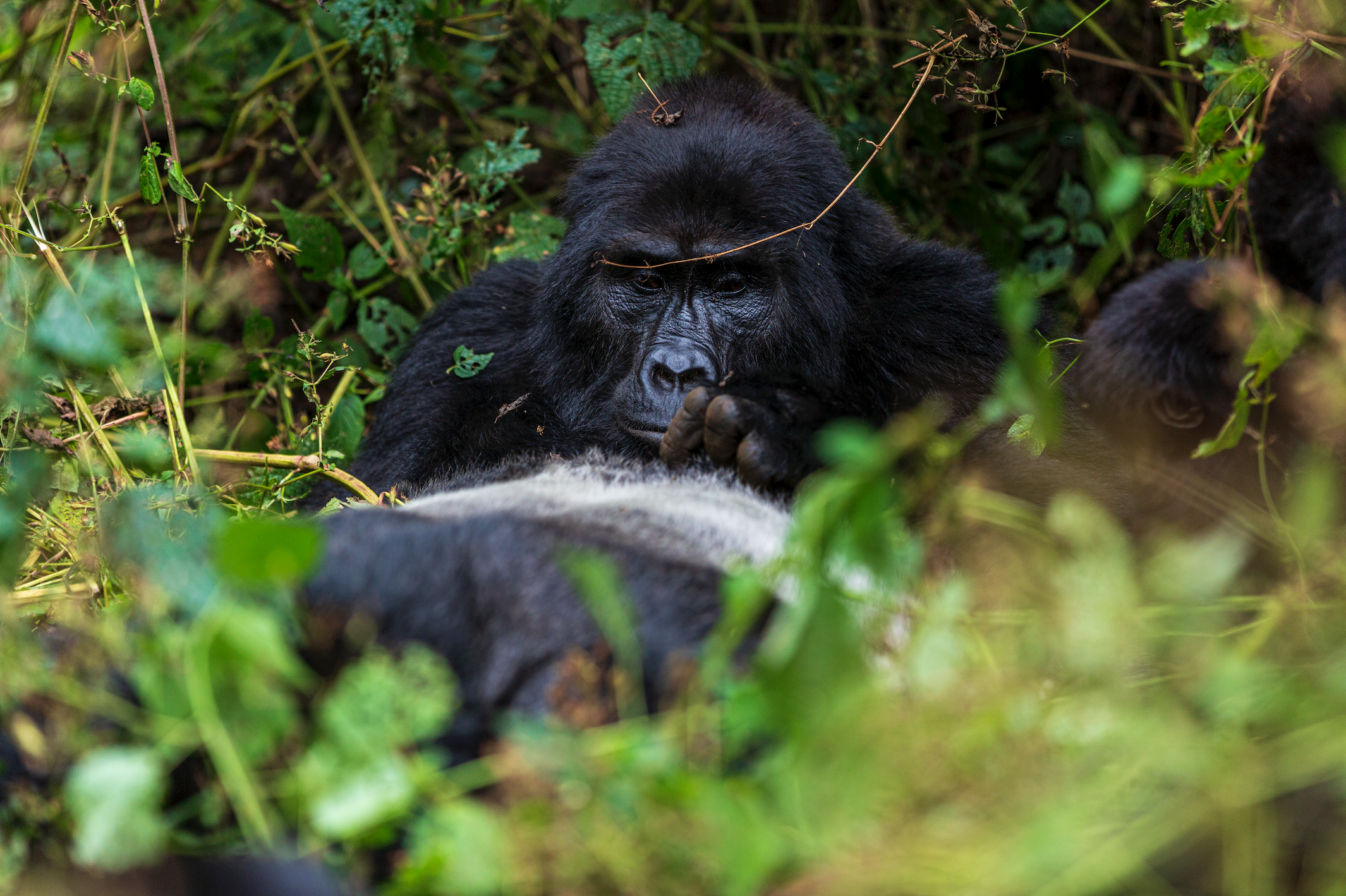
Africa Gorilla Tracking Safari
Conclusion: Is Gorilla Trekking in Uganda and Rwanda Worth the Challenge?
So, how difficult is gorilla trekking in Uganda and Rwanda? The honest answer is that it requires effort, patience, and resilience—but the reward far outweighs the challenge. Meeting a family of mountain gorillas in their natural habitat is one of the most profound wildlife encounters in the world. Whether in Uganda’s rugged Bwindi forests or Rwanda’s volcanic slopes, the trek is a journey of discovery, adventure, and conservation impact.
At Winton African Safaris, we believe that difficulty should not deter travelers. With preparation, support from guides and porters, and careful itinerary planning, gorilla trekking is accessible to travelers of all ages and fitness levels. More importantly, the experience is transformative, leaving you with memories that last a lifetime and a sense of connection to one of the planet’s rarest species.
For those asking whether gorilla trekking can fit into broader Tanzania Safaris, Kenya Tours, or Rwanda Cultural Safaris, the answer is a resounding yes. By combining destinations, travelers enjoy the most complete safari journey possible—one that spans primates, big game, birding, and cultural exploration across East Africa.

